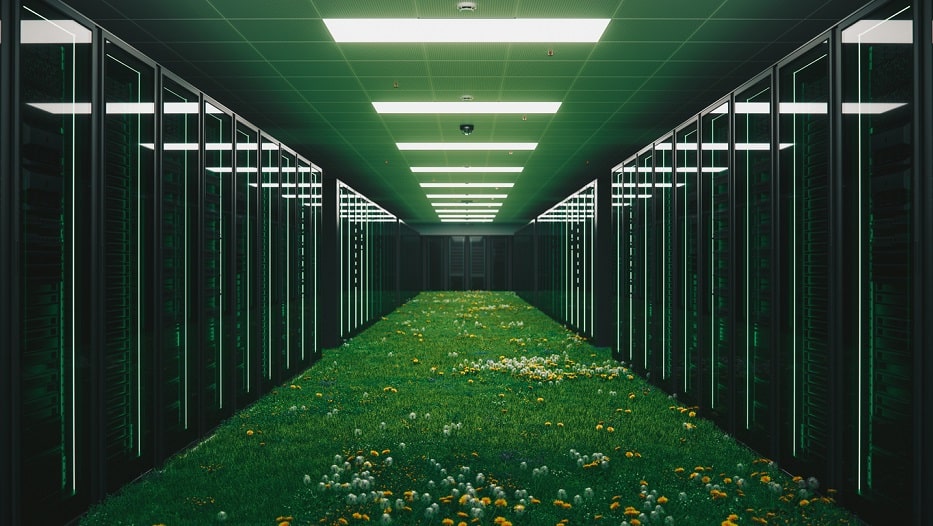Julia Maria Gomez de Avila Segade | 20/07/2023
In a digital, globalized economy, based on information Data Centers are the foundation on which all strategic sectors grow. Despite the complexity of their infrastructures, the industry’s commitment to sustainability is firm.
The significance of these imposing constructions in global economic development goes alongside their demands: hyperactive equipment, with high energy demand and major risk exposure. Ignacio Velilla, chairman of the Spanish Association of Data Centers (SPAINDC) tells us about the challenges facing the industry in terms of innovation and sustainability, which is based, to a certain extent, on everyday care: preventive maintenance. “The Data Center is a living and breathing thing, it’s more than a technology business. It is very important that you continually invest in improving your efficiency, system availability. That the useful life of all equipment should be very controlled: servers, communication networks, storage cabinets, cooling systems, etc.,” the expert says.
Both in Spain and overseas, the main category of Data Center used is Tier III, a reference design for large providers and manufacturers, as they guarantee service without the need for supply interruptions to carry out maintenance, improvement or replacement of equipment. “It’s designed with lots of systems in redundancy to ensure continuity,” says Velilla.
Innovation is looking for is to develop cooling systems that achieve even better PUE, such as water cooling or immersion
Efficiency and Sustainability
Among technology sectors, Data Center development is one of the ones that shares the most objectives with sustainability agendas. “The most important thing in our industry is efficiency, which is why we always say we are sustainable natives. What we’re looking for is to clump loads and make the Data Center as efficient as possible,” says SPAINDC. As in other industries, the value used to measure is this efficiency in data facilities is PUE (Power Usage Effectiveness), a variable defined by The Green Grid. Given the maturity of the sector in this area, R&D is deployed to look for improvements in certain maintenance processes that consume more energy, such as those that decrease the temperature of the equipment. “Today, Data Centers are designed with tremendous efficiency and what innovation is looking for is to develop cooling systems that achieve even better PUE, such as water cooling or immersion. The results are very good,” says the chairman of the association. The underwater Data Center profile is especially geared toward very static loads, i.e. customers who do not require constant equipment change or card intervention. “Many of the big Clouds are already using these types of systems, because when they deploy clouds they don’t need to change systems regularly,” they say.
Energy is ultimately what makes the success of a data storage project
Challenges and solutions
According to SPAINDC, one of the main challenges in the Data Center industry lies in finding electrical power. These infrastructures must be located near large urban centers that already heavily use local sources. “This doesn’t mean you have to be downtown, by absolutely any means, but you need some closeness. What does this mean? That you have clean energy – because in Spain we use 100% renewable sources. We are currently in a cycle where Red Eléctrica, along with local distributors, are strengthening the entire network that supports Data Centers. Energy is ultimately what makes the success of a data storage project,” the expert says. In order to ensure a constant and environmentally friendly electricity supply, Spain is working alongside renewable sectors – wind or solar – with which it can create direct connections to production plants, or the use of vectors that have not yet been exploited, such as hydrogen.
The environmental commitment, which was enshrined in the signing of the Paris Agreement – the European climate neutrality pact – has led the sector to make significant changes in a very short period of time. “Data Centers don’t have a big footprint in the environment they are located in. Here in Spain, almost everyone uses closed loops of water, which optimizes consumption. They are not structures that degrade the environment; on the contrary: this is the basis on which the entire digital economy is supported and which acts as a lever of change for the region’s economy.”
Sweet Moment for the Data Center
This push to economic development is starting to be seen in Spain, which could become a strategic hub within data management. “We recently attended the Data Center Dynamics and submitted an industry report confirming that we are at a very sweet time for the country. Installed power has grown by nearly 40% in the past year, but the outlook for the coming years is for continued growth. That is, a potential that is unprecedented in any other country and that happens thanks to our geographic position,” says Ignacio Velilla, who explains how the region’s peninsular shape makes it a privileged point of access to some of the world’s main underwater cables, arteries of telecommunication and global connection. “Since the partnership, we have valued investment over the next four years at around €14 billion, with a seven-fold impact on the region’s economy. That’s why we can’t be anything other than positive in the evolution of the sector,” he concludes.
Contributor to this article:

Ignacio Velilla is chairman of the Spanish Data Center Association (SPAINDC), connects the market-leading data centers and high-quality suppliers in Spain with a mission: to strengthen economic growth and profile the data center industry with the government, media and society.





